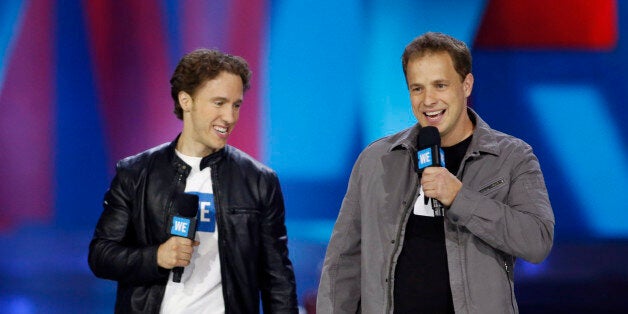
The image of three-year-old Alan Kurdi lying dead on a Turkish beach etched the plight of Syrian refugees into the global consciousness. If only the world had felt his dinghy capsize, been thrown into the churning waters after fleeing a rubble-worn country. Maybe more in the UK would welcome refugees from the Calais camp or some of the 90,000 lone child refugees who are most vulnerable.
Now, virtual reality promises to mimic these experiences, with tools to view, hear and feel the world as a Syrian refugee, or a girl fetching water in East Africa. If our brains can be tricked into the immediacy of these events, our emotions will follow.
We are hardwired for empathy. A landmark 2012 study found that human interactions are unique because of a neurological overlap in our understanding of the self and those closest to us. Our brains don't differentiate--our loved ones' emotions affect us the same as our own.
We've all experienced this physiological connection when we've felt the pain of a friend. But what about people in distant countries? Virtual reality can close that gap and revolutionise empathy.
Professor Jeremy Bailenson has been researching the neurological and psychological impact of virtual reality for 15 years at Stanford's Virtual Human Interaction Lab. Visual, auditory and dynamic spatial cues mimic real-life responses in the brain; he's found that the immersive quality of this technology leaves an indelible mark on users in a way that still images don't.
Bailenson's lab is harnessing this potential, pioneering simulated experiences that create selfless behaviours. One recent study found that giving test subjects super powers in virtual reality, like the ability to fly, made them more likely to help a lab technician with a task in real life.
Virtual reality is inspiring people to become everyday superheroes.
So it's no surprise that non-profits are leveraging this technology. In the face of charity fatigue and whiplash-quick news cycles that lurch from crisis to crisis, there's a more intimate way to connect donors to a cause.
Hundreds of people donned simulation goggles at a charity gala in New York last year. They experienced the daily routine of a 13-year-old girl in Ethiopia as she trekked for miles to fetch 25 litres of water for her family. The event raised $2.4million for clean water projects, far more than projected.Journalists, too, have harnessed virtual reality to lift their stories off the page and screen. Nonny de la Pena's Project Syria puts users on the ground in a refugee camp. It debuted at the 2014 World Economic Forum in Davos, giving politicians a rare chance to experience the conflict themselves.
We visited Dadaab, a sliver of land in Northern Kenya, during the 2011 drought that plunged East Africa into crisis. It was home to 300,000 refugees fleeing conflict and famine. Aid workers went without sleep, mothers starved to save food rations for their children. We struggled to get the world to pay attention, taking photos and writing stories that didn't do justice to the crisis.
We hope the next frontier for virtual reality is the classroom, where it promises to immerse students--our future leaders--in worlds beyond textbooks and can teach lessons for the real world.
If a single image can transcend borders, imagine what virtual reality can do for global compassion.
Craig and Marc Kielburger are the co-founders of the WE Movement, including the year-long educational programme WE School and the youth empowerment event WE Day. Watch the WE Day UK live stream on 22 March at WE.org
